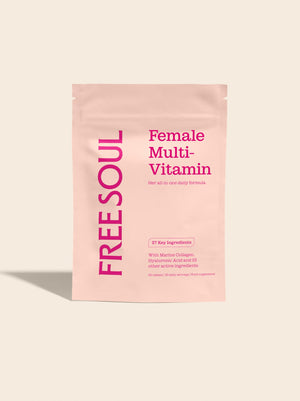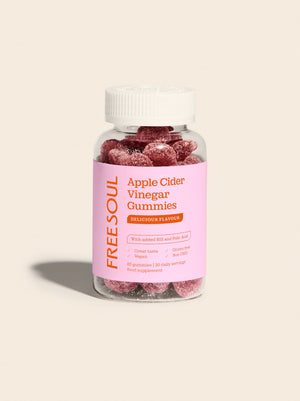Hormones play a big role in women’s health throughout our lives, influencing everything from energy levels and mood to metabolism, cognition, and overall well-being. As hormones shift, they also influence what is known as foundational wellness, your body’s core systems like stress resilience, sleep quality, emotional balance, and physical performance.
Life for most women these days is pretty busy and demanding, and many unknowingly become reliant on stress hormones to power through the day, unaware of the long-term toll it can take. Chronic stress impacts hormone balance, disrupts sleep, increases cravings, and causes mood swings. Over time, it can also affect your metabolic health, immune function, and mental clarity.
That’s why any nutrition or lifestyle approach needs to adapt with your hormones, from young adulthood through to post menopause. Supporting foundational health pillars like stress management and sleep also goes a long way to supporting balanced energy, emotional well-being, and healthy eating habits.
Understanding this connection between hormones, nutrition, and lifestyle empowers women to take proactive, sustainable steps toward feeling their best through every phase of life.
Hormonal Phases of the Menstrual Cycle
The menstrual cycle lasts an average of 28 days, but can range between 21 and 35 days, and up to 48 days in adolescents. A healthy cycle is generally one that’s regular, with minimal disruptive symptoms, and evidence of regular ovulation[1].
The cycle is divided into two main phases: follicular and luteal. Menstruation comes at the start of the follicular stage, and ovulation at the beginning of the luteal[2]. Here’s what typically happens in these stages, but remember: everyone’s cycle is different, and your “normal” may look a little different to this.
Follicular Phase (Days 1–13):
This phase begins with menstruation (typically days 1 and 5), when estrogen and progesterone levels are at their lowest, triggering the shedding of the uterine lining. Many women feel more tired, experience cramps, and need extra iron due to blood loss.
As the cycle continues, the pituitary gland releases follicle-stimulating hormone (FSH), signalling to your ovaries to start maturing eggs in preparation for ovulation. Oestrogen begins to rise, which can lift your mood, increase energy, and improve focus. This phase supports muscle strength and cognitive clarity.
Luteal Phase (Days 14–28):
Ovulation usually occurs around day 14, prompted by a surge in luteinising hormone (LH). Oestrogen peaks and libido may increase during this most fertile phase. After ovulation, progesterone rises to prepare the uterus for possible implantation.
As hormones shift, some women may experience premenstrual syndrome (PMS), including bloating, anxiety, and irritability. If pregnancy doesn’t occur, both oestrogen and progesterone drop, and the cycle starts over.
Hormone Action
For women, mood, appetite, metabolism, cognition, and cardiovascular function are all influenced by oestrogen and progesterone levels.
- Oestrogen supports brain function, bone density, and vascular health. Its decline during menopause is one reason women face a higher risk of osteoporosis and cardiovascular disease [3].
- Progesterone helps calm the nervous system and balance oestrogen. When levels dip, it can lead to insomnia, anxiety, and PMS[4].
- Testosterone, though present in smaller amounts, also plays a role, supporting libido, muscle maintenance, and energy[5].
Cravings often intensify during the luteal phase, when progesterone reduces insulin sensitivity. This can lead to blood sugar instability and increased hunger, especially for carbs [6]. During menopause, erratic cycles and hormone shifts also make insulin resistance more common, especially when combined with stress or sleep deprivation[7] . Cravings are not simply a lack of willpower, but often reflective of hormonal turbulence.
Tip: Eating a balanced diet with plenty of protein and fibre can keep blood sugar stable and support longer-lasting fullness.
Nutrient Interactions with Hormonal and Overall Health
Certain nutrients are particularly important for women to prioritise during different life stages. Whether you’re looking at your diet or considering supplements, EU register of health claims is the best resource to check for verified benefits. The following nutrients have claims approved by the EU.
- Iron: Contributes to the reduction of tiredness and fatigue, supports normal immune function, and is particularly important for women of reproductive age due to blood loss during menstruation.
- Magnesium: Supports normal nervous system function, contributes to energy-yielding metabolism, and plays a role in muscle and psychological function.
- Chromium & Fibre: Chromium helps maintain normal blood glucose levels. Fibre supports digestive health and may aid in glycaemic control as part of a balanced diet.
- Omega-3 Fatty Acids (EPA and DHA): Support normal heart function (with a daily intake of 250 mg EPA/DHA). DHA also contributes to the maintenance of normal brain function and vision. Emerging research is also exploring their role in inflammation and cell membrane function.
- Calcium & Vitamin D: Both are needed for the maintenance of normal bones. Vitamin D also supports normal immune function and muscle health, which is particularly relevant post-menopause.
- B Vitamins (e.g. B6, B12, Folate): Contribute to normal psychological function, energy metabolism, and the reduction of tiredness and fatigue. Vitamin B6 also supports hormonal regulation.
- Protein: Helps maintain muscle mass and normal bones, and supports the growth and development of body tissues. Getting enough protein also supports balanced blood glucose levels.
- Healthy Fats: Provide essential fatty acids that are needed for normal hormone production and overall cellular function.
Tip: You’ll find many of these vitamins and nutrients in Free Soul’s Multivitamins with Collagen, Vegan Protein Blend, and Hydrate.
Exercise Performance and Hormonal Phases
Exercise is one of the most effective ways to regulate hormones, but because women’s hormone levels fluctuate throughout the month, the intensity, timing, and recovery of workouts should be personalised. Adjusting physical activity to align with the phases of the menstrual cycle can help improve performance, support metabolism, and prevent overtraining and injury.
Remember, every woman’s body is different, including cycle length and phase duration. The most important thing is to tune into how you feel and adapt accordingly, but here are some general guidelines:
- Follicular phase (day 1 to 13): Rising oestrogen enhances insulin sensitivity, increases energy, and supports lean muscle growth[8]. This can be a great time for strength training, cardiovascular work, and high-intensity exercise.
- Ovulation (around day 14): Peak levels of oestrogen and a surge in testosterone can lead to improved strength, coordination, and confidence. This is the best phase for pushing limits and exploring new challenges[9].
- Luteal phase (post-ovulation): Progesterone rises, which may lead to fatigue, slower recovery, fluid retention, and feeling overheated during workouts[10][11]. Lower-intensity, movement like yoga, Pilates, or walking, may feel more supportive
- Menstruation: Some women feel energised, while others benefit from rest. Light movement may ease cramps, but the most important thing is to listen to your body.
Cycle-Syncing Exercise Examples:
- Follicular: Strength training, HIIT, cardio
- Ovulation: Peak performance and high-intensity workouts
- Luteal Low-impact movement, stretching, breathwork
- Menstruation: Gentle walks, stretching, or full rest
When Menstrual Irregularities Signal a Concern
There are many reasons your periods might become erratic. Here are some of the common causes of menstrual irregularity, and how to support your body through these times.
Polycystic Ovary Syndrome (PCOS): PCOS affects around 1 in 10 women and is one of the most common causes of irregular periods. It is usually characterised by excess androgens (which can lead to acne or excess hair), irregular or absent ovulation, and insulin resistance[12]. Low-glycaemic index foods and resistance exercise can help support hormonal balance[13].
Premenstrual Syndrome (PMS) and Premenstrual Dysphoric Disorder (PMDD): PMS affects up to 80% of women[14]; while PMDD is rarer and more severe[15], involving debilitating mood changes. While the exact causes aren’t fully understood yet, serotonin dysregulation and progesterone sensitivity are believed to be the main contributors[16]. Foods rich in magnesium, vitamin B6, and omega-3 fatty acids could help support PMS and PMDD[17].
Endometriosis: A chronic condition involving the growth of endometrial-like tissue outside the uterus, leading to pain and fertility challenges[18]. While every case is different, anti-inflammatory diets rich in omega-3s, antioxidants, and plant fibre may help support your body[19]. Medical guidance is important for long-term management.
Amenorrhoea: This refers to missing periods for three months or more (excluding pregnancy)[20]. While it may not feel urgent, missing periods is a sign your body needs more support. Common causes include excessive exercise, low-calorie intake, high stress, thyroid issues, or polycystic ovary syndrome (PCOS)[21]. Recovery typically involves reducing physical stress, eating enough, and allowing the body to restore balance.
This is general guidance for informational purposes only. Always speak to your GP or a healthcare professional if you’re experiencing persistent symptoms or changes in your menstrual cycle.
Sleep and Hormones
Sleep is when your body restores, repairs, and recalibrates its hormonal systems[22].. During deep sleep, growth hormone is released, cortisol is modulated, and melatonin rises to regulate your circadian rhythm[23].
Even one night of poor sleep can impact your hormones: ghrelin (the hunger hormone) rises, leptin (which signals fullness) drops, insulin sensitivity decreases, and cortisol shoots up the next day[24]. How does this feel for you? Intense cravings, fatigue, emotional ups and downs, and fuzzy thinking.
Women are more likely to experience sleep disruption around hormonal shifts, from PMS and menopause, which can cause night sweats, restlessness, and difficulty staying in deep, restorative sleep[25].
How to improve sleep
- Maintain a consistent bedtime and wake time to help regulate your circadian rhythm.
- Reduce blue light exposure in the evening by using blue-light filters or avoiding screens an hour before bed.
- Limit stimulants, such as caffeine, after 2 p.m.
- Set the mood with a sleep-friendly environment that’s cool, dark, and quiet. Try blackout curtains, magnesium, or white noise to help you feel more relaxed.
Tip: Make sleep hygiene a priority. Without consistent, high-quality sleep, hormonal balancing efforts in other areas (nutrition, stress, exercise) won’t get you very far.
Hormonal Changes and Impacts by Life Stage
Different stages of life bring different mental and physical challenges, as oestrogen, progesterone, testosterone, and other regulatory hormones shift, affecting everything from bone density to appetite. Here’s what occurs during each phase:
















